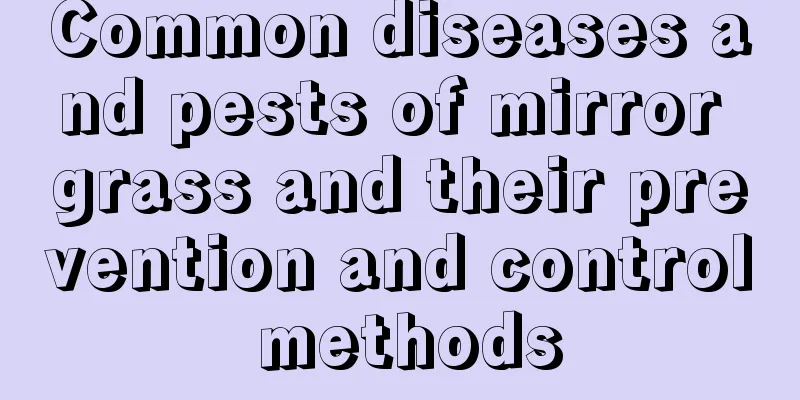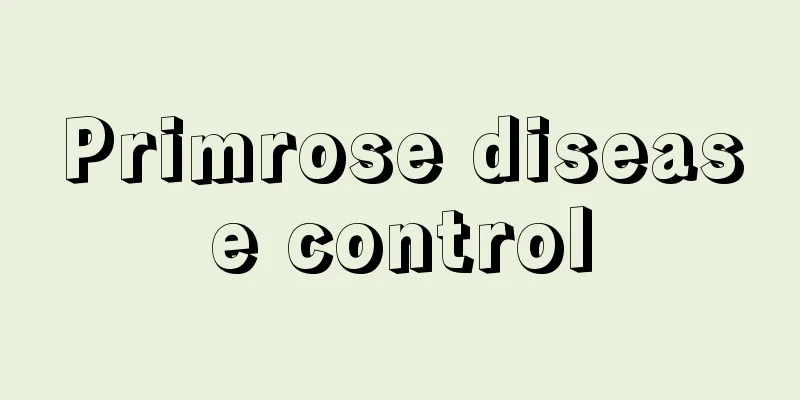Common diseases and pests of mirror grass and their prevention and control methods

Common diseases of mirror grass and their prevention and control methodsanthraxAnthracnose is an important disease that harms foliage flowers and is a fungal disease. It often occurs in hot and humid seasons, especially the hot and humid rainy season, and can also be caused by excessive application of nitrogen fertilizer. Symptoms: Small brown spots appear on the leaves at the early stage of the disease, which then expand into round or oval shapes. The spots gradually dry up, and in severe cases the entire plant is infected. Leaf spotSymptoms of leaf spot disease: The pathogen infects the leaves, and the spots on the leaves are circular, which later expand into large irregular spots and produce ring patterns. The spots change from reddish brown to dark brown, with gray-brown in the center. Prevention and control methods: Remove diseased leaves and add pesticides for prevention and control. Clear the diseased leaf parts promptly and spray the pesticide. The pesticide can be 1000 times diluted 50% thiophanate. Common Pests of Mirror Grass and Their Control MethodsScale insectsBasic symptoms of scale insect pests: Scale insects attach to the surface of mirror grass leaves, and their secretions contaminate the leaves, even causing serious consequences such as leaf withering. Causes of scale insect occurrence: untimely disinfection and breeding of insect eggs. Prevention and control methods: Spray the pesticide in time during the nymph stage. You can use 1000 times diluted 40% oxydemeton-methyl, spray once every 8 days, for 2 to 3 times in a row. Mixing white wine with water can also effectively kill scale insects without damaging the leaves of mirror grass. Cotton scaleSymptoms of the cottony scale: They often gather on leaf buds, tender buds, and new shoots to cause damage. In severe cases, the leaves turn yellow, causing the branches to wither, and eventually the entire branch or plant to die. Even if some branches and leaves remain, they will become gray and black due to sooty mold caused by their excrement, seriously affecting their ornamental value. Prevention and control methods: Check at any time, pinch out the female insects and egg sacs with your hands or tweezers, or cut off the insect branches and leaves. During the migration period of newly hatched nymphs, you can spray 1000 times diluted 40% oxydemeton-methyl, 1000 times diluted 50% fenitrothion, or 400-600 times diluted ordinary laundry detergent, once every 2 weeks or so, and spray 3-4 times in a row. |
<<: Diseases and prevention methods of Gloxinia
>>: Diseases of Palm Bamboo and Their Prevention and Control
Recommend
Cultivation methods and precautions of agapanthus
1. Soil requirements When growing Agapanthus, the...
How to grow potted Pyracantha
1. Matrix selection For potted Pyracantha, it is ...
Is soybean planting profitable? How much is the net profit per acre of soybean planting?
Is soybean farming profitable? Soybeans have very...
How to plant Chinese cabbage? Planting methods and management techniques
Growing environment requirements for Chinese cabb...
How to grow Rainbow Jade Succulent
The leaves of Rainbow Jade are just like its name...
Can I pour beer on Hongyun Dangtou?
1. Principle Plants such as the Chinese lucky cha...
Cultivation methods and precautions of calyx spur flower
1. Temperature The calyx spur generally prefers a...
What kind of flower pot is good for cactus?
What kind of flower pot is suitable for cactus Th...
What are the minefields of flower cultivation?
1. Be careful with flowers that have strong fragr...
How to change the soil in Damulan and what is the time and method of changing the soil
When will the soil in Damulan be changed? It is g...
How does the dragon blood tree germinate?
Dragon Blood Tree Cutting Head Light Pole When cu...
How to grow watermelon
1. Cultivated Land Before planting, use a machine...
How much is spinach per pound
1. Price The price of spinach is related to the v...
How to plant golden thread vine (introduction to planting methods)
1. Seed planting method 1. Choose good seeds: Whe...
Cattle breeding technology and cattle breeding methods
As an important livestock for humans, cattle not ...









